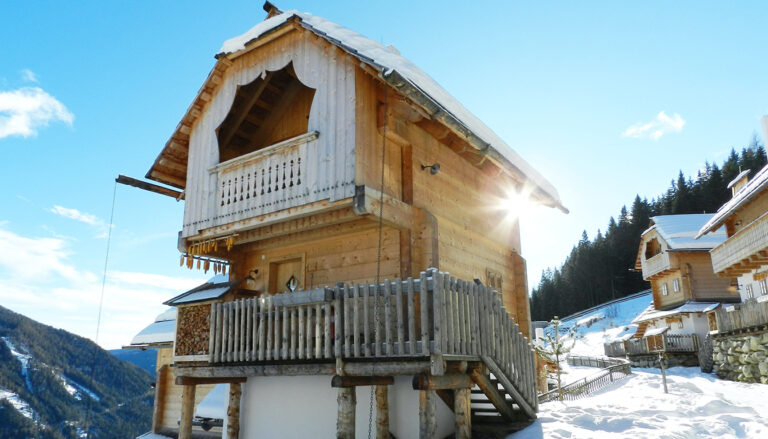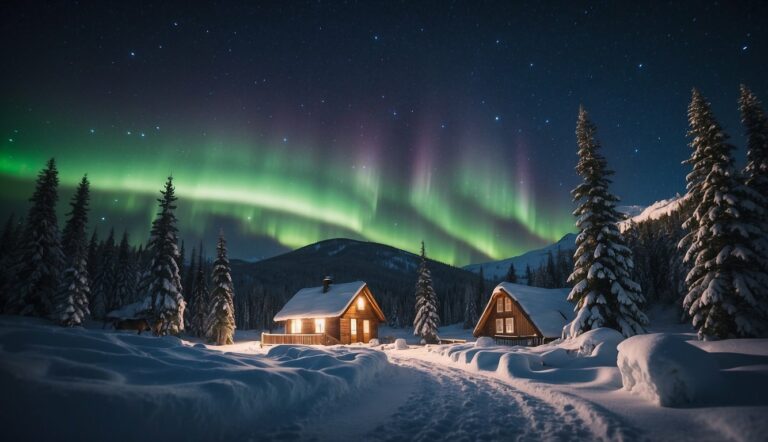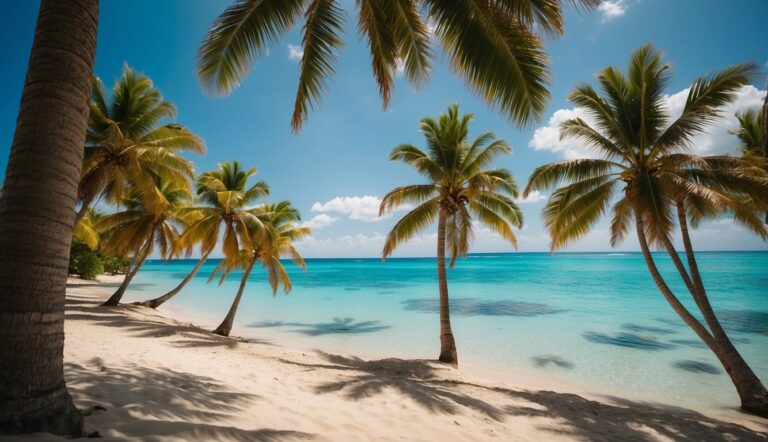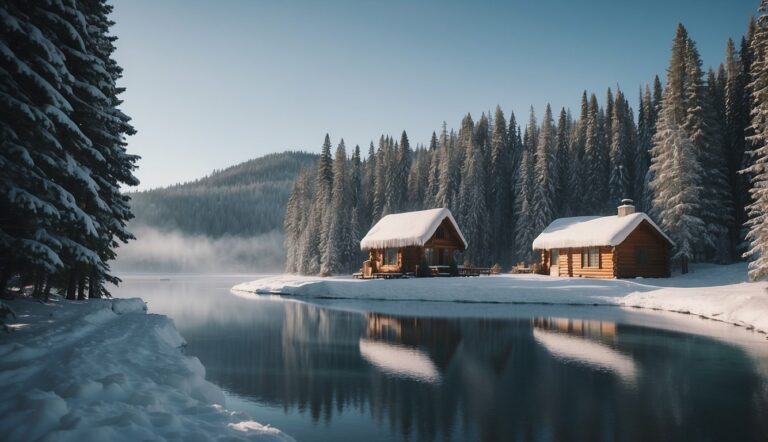Celebrating Christmas in Bolivia: Traditions in Bolivia and How Bolivians Celebrate
Christmas in Bolivia reflects a blend of indigenous traditions and Roman Catholic beliefs, marking a time of deep religious significance and community celebration. As a South American country with a majority Catholic population, the observance of Christmas is rooted in both the liturgical calendar and local customs. Celebrations commence on Christmas Eve until Epiphany on January 6, revealing a distinct cultural tapestry that has evolved.
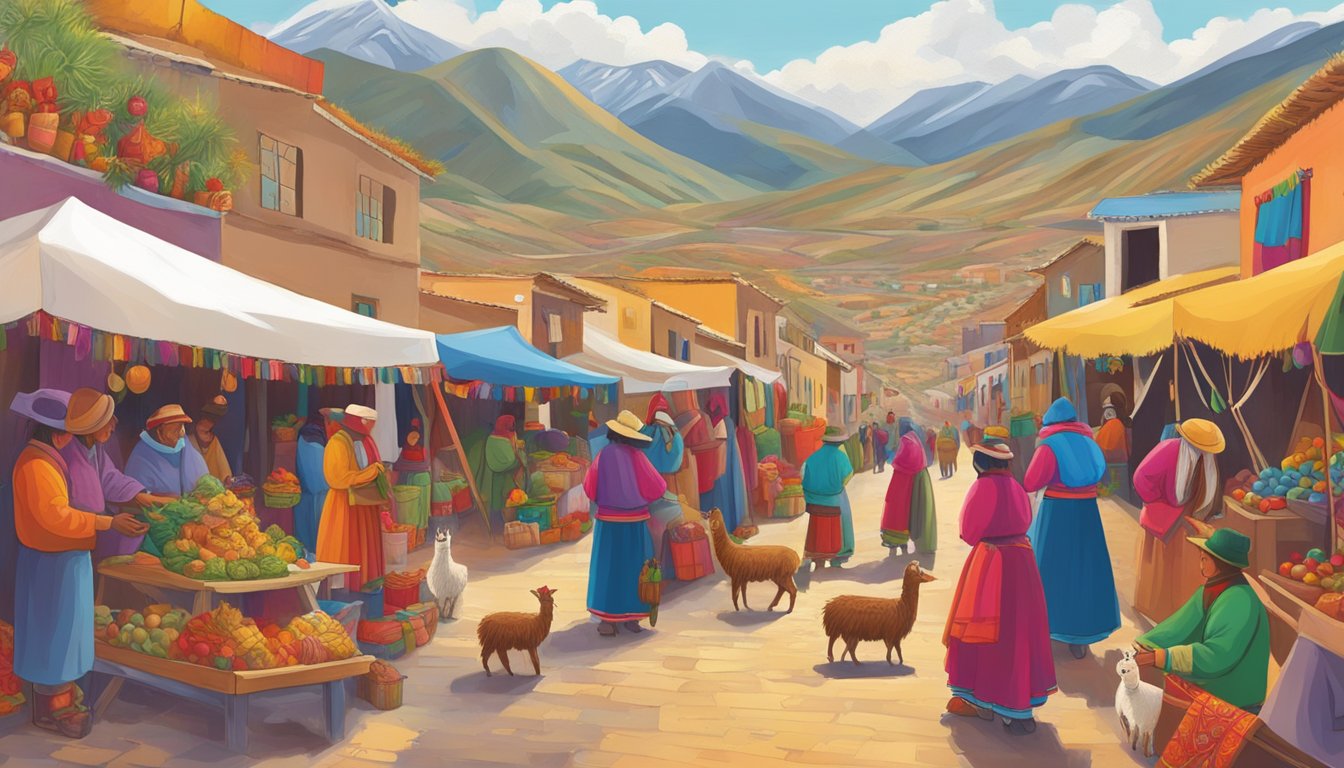
Bolivian festivities are characterized by midnight masses, known locally as ‘Misa de Gallo’ or ‘Mass of the rooster,’ pesebres or nativity scenes, and various regional practices that showcase the country’s rich cultural diversity. From the highlands of the Andes to the lowlands of the Amazon, each region brings its own flavour to the holiday, often including unique decorations, meals, and communal activities. The exchange of gifts, especially for children, is also a common practice, inspired by the story of the Three Wise Men.
While the celebrations may harbour differences from one region to another, the gathering of families and communities is central to all. Simple yet heartfelt decorations adorn homes and churches, and people share traditional meals. Despite the modern influences that have touched many corners of the world, Bolivian Christmas remains a time-honoured tradition that cherishes simplicity, spirituality, and togetherness.
Historical Background of Christmas in Bolivia

The historical evolution of Christmas in Bolivia is a tapestry woven with strands of indigenous beliefs and Spanish Catholic influences. It reflects the syncretism between pre-Columbian traditions and Roman Catholicism introduced during Spanish colonization.
Influence of Spanish Colonization
Spanish colonizers brought Roman Catholicism to Bolivia, with the first mass and Christmas celebrations introduced by missionaries. The Misa de Gallo, or Rooster’s Mass, became a central feature of Bolivian Christmas, exemplifying the zeal of Catholic evangelization efforts. This mass is still celebrated on Christmas Eve in many parts of Bolivia.
- The Catholic Church played a pivotal role in shaping the Christmas celebrations in Bolivia.
- Spanish customs fused with local traditions, leading to unique expressions of the Catholic faith.
Adoption of Indigenous Traditions
Bolivian Christmas celebrations incorporate Indigenous Traditions from native Aymara and Quechua cultures, enriching the holiday with diverse customs.
- Aymara and Quechua communities merged their own solstice celebrations with Christmas, resulting in a blend of rituals.
- Native music, dances, and ceremonies enrich the Christmas landscape, reflecting the resilience and adaptation of Indigenous Traditions within a Roman Catholic framework.
Religious Observances and Practices
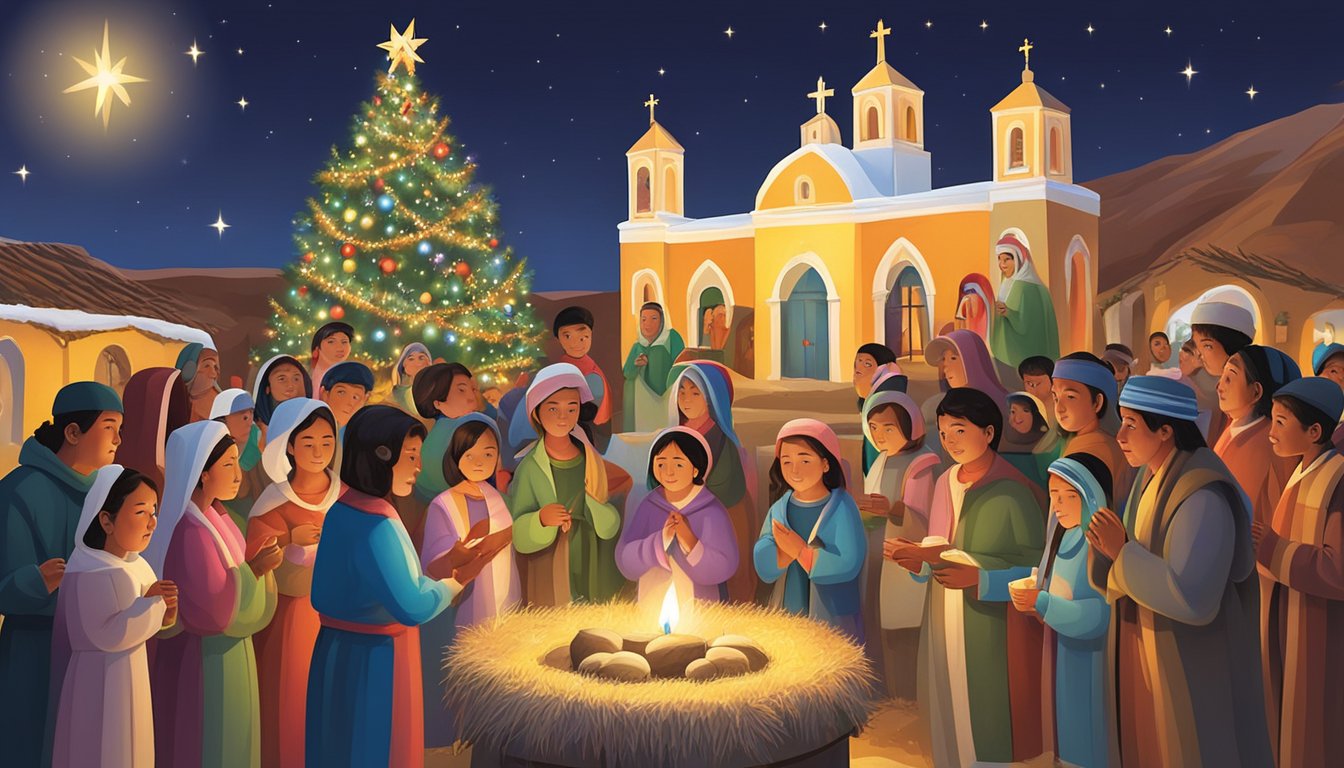
In Bolivia, Christmas is deeply intertwined with religious traditions honouring the birth of Jesus Christ. Celebrations are replete with rituals that reflect the country’s Catholic heritage and local customs, with particular emphasis on Midnight Mass and nativity displays.
Midnight Mass and Misa de Gallo
Christmas Eve holds special significance in Bolivia, with a highlight being the Midnight Mass, known locally asMisa del Gallo (Mass of the Rooster). Families gather in churches to honour the birth of Baby Jesus, and this mass extends into the early morning of Christmas Day.
Nativity Scenes and Nacimientos
The nacimiento or pesebre (nativity scene) occupies a central place in the Bolivian Christmas. Homes, churches, and public spaces display elaborate depictions of Mary, Joseph, the Shepherds, and the Wise Men gathered around Baby Jesus. These nativity scenes are a focal point for both decoration and devotion.
Processions and Epiphany Celebrations
Bolivian Christmas extends into early January with the celebration of Epiphany. Locals participate in processions that represent the journey of the Wise Men to visit the newborn Christ. This time is marked by communal gatherings, with many enacting the arrival of the Magi bearing gifts for Baby Jesus.
Festive Decorations and Symbols
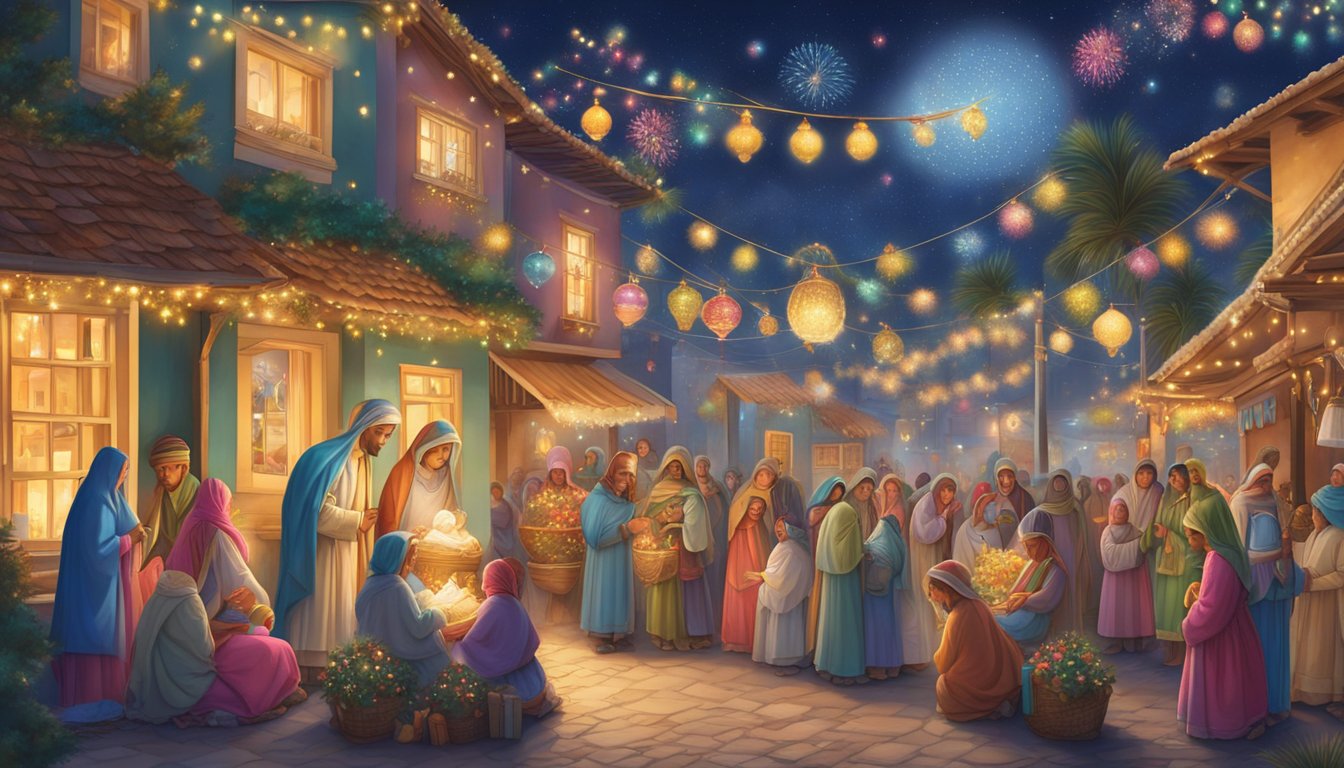
Christmas decorations in Bolivia blend indigenous and Roman Catholic traditions to create a vibrant, visual feast. They accentuate the spiritual significance of the holiday and infuse it with local cultural elements.
Christmas Trees and Pesebres
While Christmas trees are embraced as part of the festive decor, lavished with ornaments, lights, and tinsel, the pesebre holds a distinct place of honour. These nativity scenes, meticulously handcrafted, represent the birth of Jesus and serve as the spiritual centerpieces in homes and churches. They vary in complexity, from simple carvings to elaborate dioramas featuring figures of the Holy Family and the Magi.
Lights and Candles
Luminous decorations are not as predominant in Bolivian festivities in comparison to other cultures. Instead, lights and candles are used strategically, providing ambience and highlighting key figures and scenes within the pesebre. Their flickering glow is meant to symbolize hope and the guiding light of the star of Bethlehem.
Flowers and Colors
Florals play a symbolic role during Christmas, with specific flowers and colours signifying various aspects of the celebration. Vibrant hues, predominantly reds and whites, reflect joy and purity and are often seen adorning churches and homes. The use of native blossoms brings a touch of Bolivian flora to the holiday observance, illustrating a connection to the country’s diverse natural beauty.
Christmas Culinary Traditions
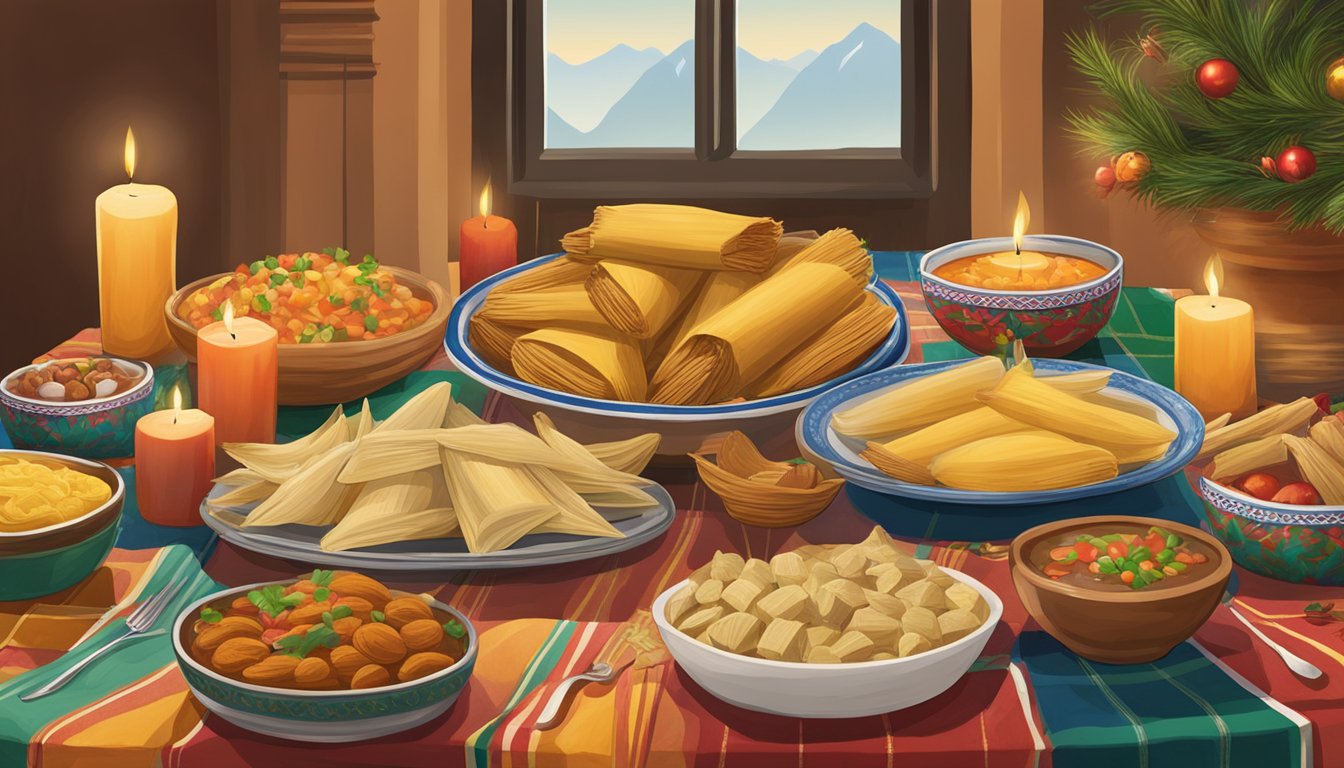
Bolivian Christmas cuisine is an integral part of the holiday festivities, featuring a generous use of meats, traditional soups, and a variety of sweets and beverages.
Main Dishes and Meats
Christmas in Bolivia sees tables laden with flavorful meats. Beef and pork often take centre stage, frequently appearing as roast pork, called “lechón”, which is seasoned with a medley of Bolivian spices. Chicken is also a popular choice, sometimes served as part of other dishes. Families take pride in preparing these meats, each bringing a unique touch to the recipes passed down through generations.
- Roast Pork: Seasoned with local spices and roasted to perfection.
- Beef: Prepared in various ways, with regional variations.
Soups and Stews
A traditional Bolivian Christmas would not be complete without soup or stew, with picana being the most iconic. This heartwarming stew is made with a base of chicken, beef, or lamb and includes potatoes, corn, and other vegetables. It’s enriched with red wine, giving it a distinct flavour that’s deeply associated with Christmas celebrations.
- Picana: A soup-like stew with meat, potatoes, corn, and red wine.
Sweets and Beverages
No Christmas feast in Bolivia is complete without a sweet ending and a comforting hot beverage. Buñuelos, deep-fried pastries often drizzled with syrup or dusted with powdered sugar, are a popular treat. Api, a warm, spiced corn drink with a vibrant purple colour, provides both warmth and a touch of sweetness. As the evening cools, hot chocolate is a favoured drink, sometimes homemade and rich with a creamy consistency.
- Buñuelos: Sweet, fried dough typically enjoyed with a drizzle of syrup.
- Api: A traditional maize-based beverage, purple in colour and often served with buñuelos.
- Hot Chocolate: A creamy beverage made from local cocoa, enjoyed for warmth and richness.
Celebrations and Social Customs
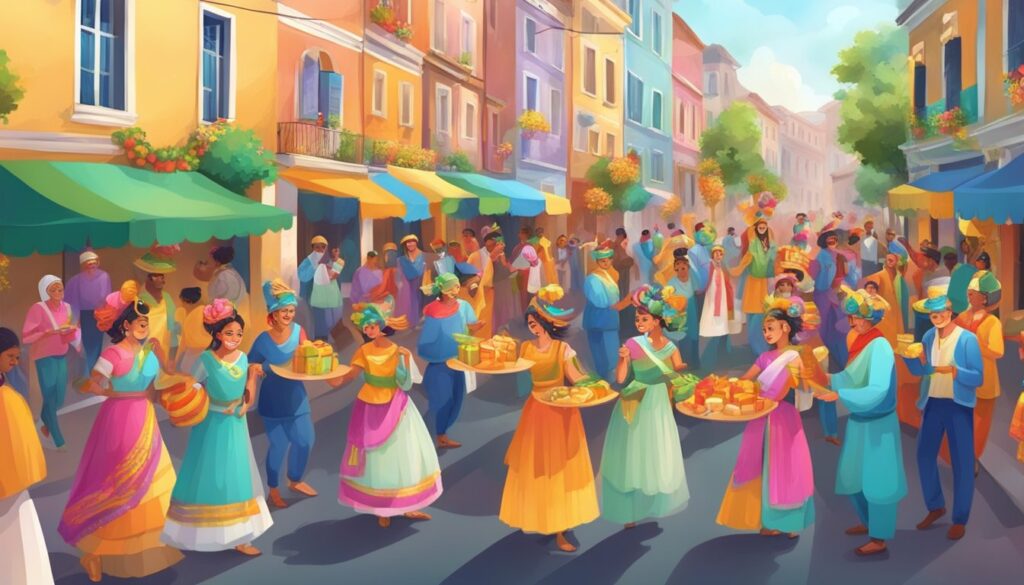
Bolivian Christmas celebrations are a blend of religious devotion and communal joy, marked by distinct social customs, ranging from unique gift-giving practices to vibrant music and dance traditions, all of which strengthen community bonds.
Gift-Giving and Canasta
In Bolivia, gift-giving at Christmas has a particular significance, revolving around the “Canasta” or basket of goods. Instead of the more commercialized gift-giving seen elsewhere, Bolivians often create and exchange baskets that may include a variety of items such as food, small home essentials, and specially selected gifts that reflect personal or family interests. This practice not only embodies the spirit of giving but also represents the sharing of prosperity with loved ones.
Music and Dance
Traditional music and dance are at the heart of Bolivian festive celebrations. Specific to the season are “Villancicos,” traditional Christmas carols often performed in both Spanish and indigenous languages. Dance, a significant aspect of Bolivian culture, finds its way into the festivities with “caporales” and “tinkus,” dances that are joyful, colourful, and often accompanied by live bands setting the tone of celebration in public squares and during family gatherings.
Community and Family Gatherings
Community is central to Bolivian Christmas, where family gatherings underscore the celebratory mood. Homes are open, and neighbours come together, blending indigenous and Christian traditions. At the heart of these gatherings is the “Misa de Gallo”, or Rooster’s Mass, attended by many on Christmas Eve, where offerings related to their professions are brought. Following the mass, families unite to share a Christmas meal, indulging in the joy of togetherness and reinforcing community bonds during the holiday season.
Modern Christmas Celebrations
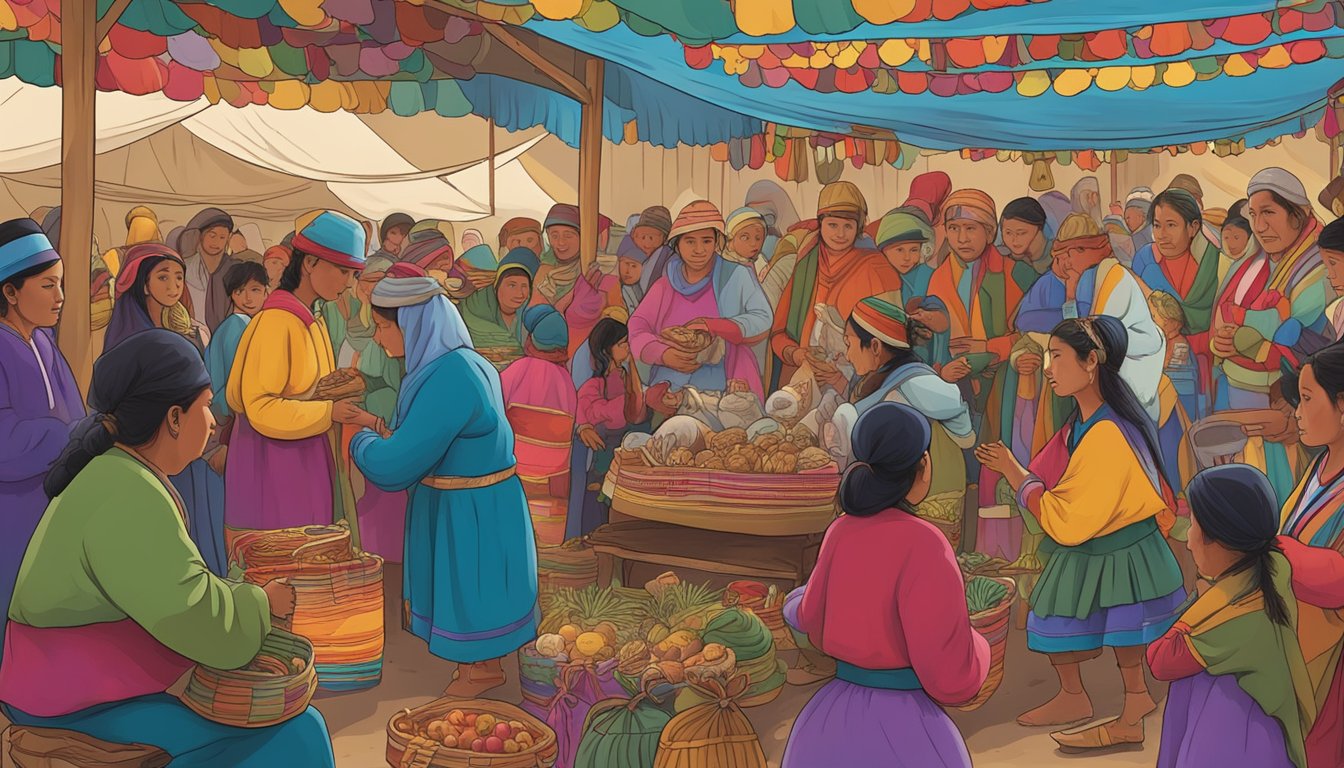
In Bolivia, Christmas celebrations mesh rich indigenous traditions with Roman Catholic practices, displaying a country rich in cultural diversity. Urban and rural areas alike showcase distinctive festivities that reflect their unique customs and communal ties.
Urban Celebrations in Santa Cruz and La Paz
Santa Cruz and La Paz are bustling with activity during the Christmas season. In these metropolitan areas, midnight mass, known as the ‘Misa del Gallo’ or the ‘Mass of the Rooster,’ marks the commencement of Christmas celebrations. The streets radiate with the glow of holiday decorations, and fireworks burst through the night sky as the residents usher in the joyous occasion with grandeur. Carolling is a prominent feature, with groups performing traditional villancicos or Christmas carols throughout the neighbourhoods.
- Santa Cruz:
- Midnight mass attendance is high.
- Fireworks are a sight to behold at midnight.
- Live music and carols enhance the festive atmosphere.
- La Paz:
- Decorations and lights adorn the city, making it a festive environment.
- Community gatherings are central to the celebrations.
Rural Traditions and Community Practices
In contrast to the urban vibrancy, rural areas maintain a more community-centered approach to Christmas. The essence of community in these areas is palpable, as small villages come together to celebrate with customs passed down through generations. This might include shared meals, joint decoration of local churches, and the preparation of nativity scenes that reflect regional variations in the depictions of the Christmas story.
- Community Practices:
- Common meals are prepared and shared among members.
- Local interpretations of nativity scenes, or pesebres, are crafted with care.
The pesebres not only serve as a reminder of the religious significance of Christmas but also act as a focal point for regional cultural expressions. Fireworks, though less prevalent than in the cities, are still a part of the celebrations, marking a communal participation in the joy of Christmas.
Christmas Market and Artisanal Goods
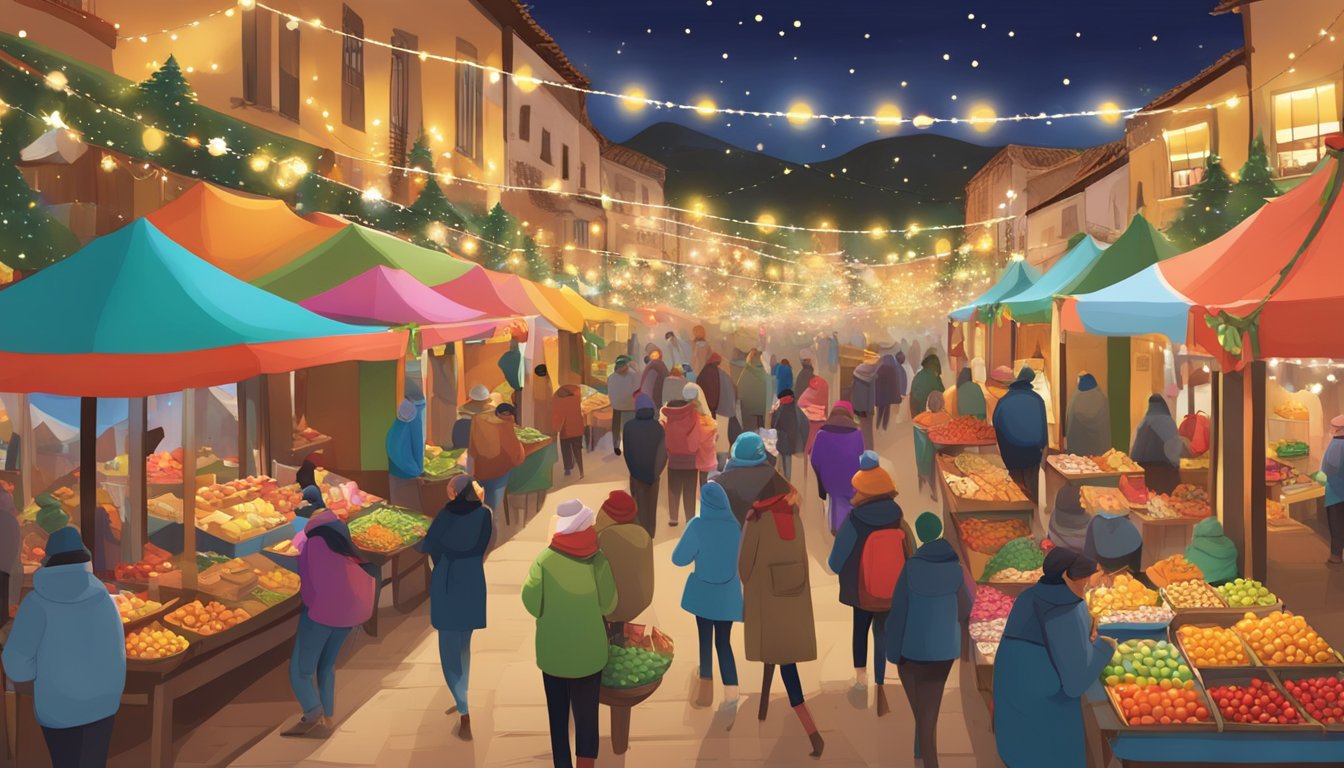
In the festive season, Bolivian Christmas markets offer a vibrant array of artisanal goods deeply rooted in cultural traditions and showcasing the rich craftsmanship of the region.
Alasitas Festival
The Alasitas Festival, a cultural event dedicated to Ekeko, the indigenous god of abundance and prosperity, characterizes the festive markets around Christmas. This festival traditionally begins in late January, but elements of it spill into the Christmas celebrations, with miniature items that are believed to bring good fortune when gifted. They represent abundant future possessions and well-being.
Crafts and Textiles
Crafts and Textiles are central to Bolivian Christmas markets, where artisans exhibit their skills through intricately woven garments and textiles. These items often depict scenes from nature and Andean mythology, honoring Pachamama, or Mother Earth. One can find a diverse selection, including:
- Handmade Clothing: Sweaters, hats, and scarves made from alpaca wool.
- Textiles: Woven blankets and tapestries with traditional Bolivian patterns.
Gourds and Cultural Items
Gourds are a staple at Bolivian Christmas markets, intricately carved and transformed into functional items such as containers or ornate decorations. These items carry significance as they are often etched with scenes depicting cultural and historical narratives. Additionally, one finds a variety of other cultural items that offer a glimpse into Bolivia’s rich heritage. Some popular finds include:
- Musical Instruments: Charangos, pan flutes, and other traditional instruments.
- Ceramics: Pottery that captures the aesthetic of Bolivia’s indigenous cultures.
Reflections and Looking Forward
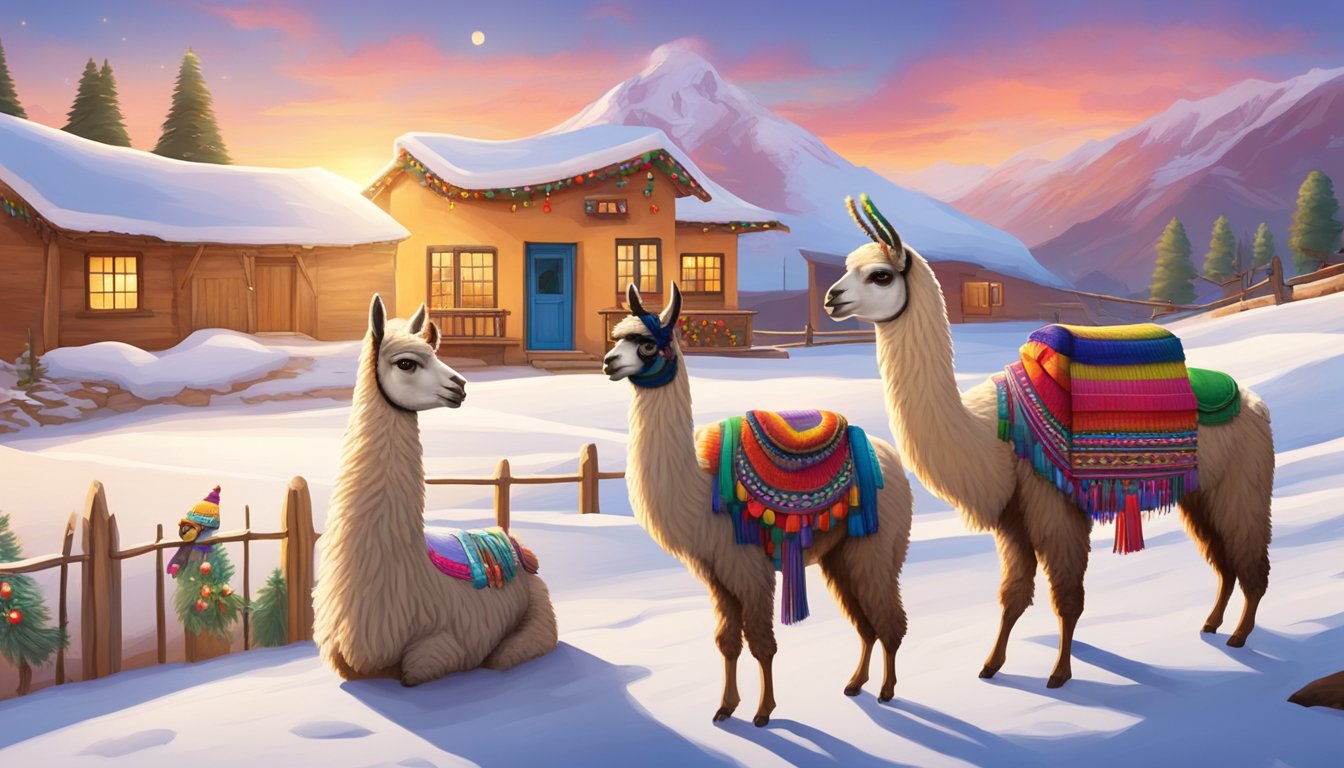
In Bolivia, Christmas traditions serve as a heartfelt reflection of the nation’s cultural identity while also adapting to contemporary beliefs and practices.
Preservation of Bolivian Christmas Customs
Christmas in Bolivia encapsulates a vibrant tapestry of cultural experience, interweaving indigenous practices with Spanish influences. Families gather to create nativity scenes, known locally as pesebres or nacimientos, which are often handcrafted and displayed prominently in homes. The language spoken during these festive times is steeped in religious and cultural idioms, with Spanish being the lingua franca. Beliefs are manifested through the offerings brought to midnight mass on Christmas Eve, representing the professions of the worshippers—a tradition reflecting the symbiosis between faith and daily life.
Evolving Beliefs and Practices
As globalization touches every corner of the world, Bolivian Christmas traditions are gradually evolving. While the preservation of customs, such as the offering of profession-related items during mass, remains vital, new practices are being embraced. Especially among the younger generation, there is an increased anticipation for Santa Claus, contrasting with the traditional Epiphany when children receive their gifts. These changes illustrate a population that respects its roots while looking forward and adapting to the global cultural milieu.
Frequently Asked Questions
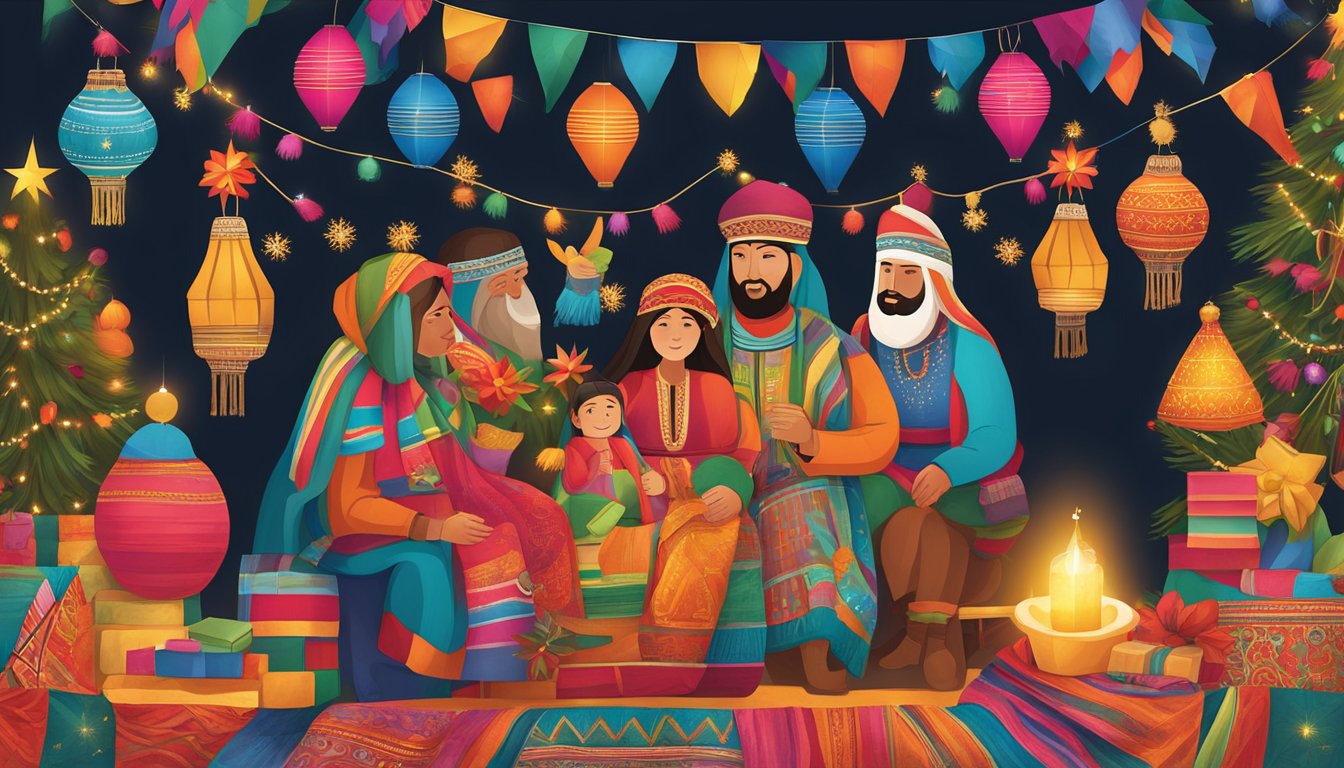
In this section, readers will find concise answers to common questions about Bolivia’s Christmas traditions and customs, offering a glimpse into the country’s rich, festive culture.
What are traditional Bolivian foods served during Christmas?
During Christmas, Bolivians often enjoy traditional dishes such as picana, a hearty soup made with chicken, beef, or lamb and seasoned with a variety of Bolivian spices. It is typically accompanied by salads, fruits, and sometimes, rice.
Can you describe common Christmas traditions in Bolivia?
Common Christmas traditions in Bolivia include attending the ‘Misa de Gallo’, a Midnight Mass on Christmas Eve, and enjoying family gatherings. Fireworks are a frequent sight post-midnight, as people celebrate into the early hours.
What is the history behind Bolivian Christmas celebrations?
Bolivian Christmas celebrations blend indigenous pre-Colombian rituals with Spanish colonial Catholic traditions. This hybrid cultural background shapes the unique forms of celebration seen in Bolivia today.
What are some interesting facts about Christmas in Bolivia?
An interesting fact about Christmas in Bolivia is the verbena, a night market held on Christmas Eve where Bolivians purchase last-minute gifts and decorations. Also, typical Western Christmas decorations are less common, with a stronger emphasis on the nativity scene, or ‘pesebre’.
Which types of decorations are commonly seen in Bolivia during Christmas?
In Bolivia, Christmas decorations often include the ‘pesebre’, or nativity scenes, which are set up in homes and public places. Brightly colored ‘aginaldos’, small bags containing candies and gifts, are also exchanged.
What typical drinks are enjoyed in Bolivia over the Christmas holidays?
Traditional drinks during Christmas in Bolivia feature ‘cola de mono’, a cocktail made from singani (a grape-based spirit), milk, sugar, and cinnamon. Hot chocolate and ‘api’, a warm maize beverage, are also popular amongst Bolivians during the festive season.


